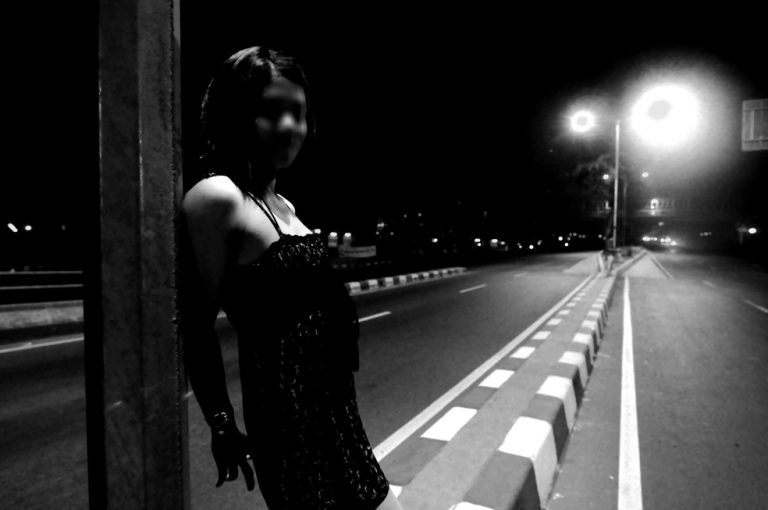
Feb 2, 2018
US-born artist Chris Coles is uniquely gifted. He has the innate ability to intimately capture on canvas denizens of the nightlife in go-go bars and brothels. In a conversation with Sonny Inbaraj Krishnan he talks about the sadness, hopes and dreams of the girls that are the subjects of his paintings, currently on display in Meta House.
Good Times2: What made you interested, as an artist, to start painting nightlife scenes?
Chris Coles: I spent years in the movie business. I came for the first time in Asia in 1995 to make Cutthroat Island, filmed in Phang Na and Koh Phi Phi in southern Thailand. I spent six months on the set and because I was the production executive, I had to interact with a lot of people that foreign tourists don’t normally have to deal with. I also had to get to know about Southeast Asia very quickly.
After that movie was finished I decided to stay back in Asia and go full time into painting. My first show in Asia was in 2009 in Singapore. After that I did more shows in Thailand. My paintings have a social context in them – and this social context is an important view of the world as it is today.
Good Times2: What is your Noir Nights in Phnom Penh exhibition all about?
Chris Coles: This exhibition on Phnom Penh Nights is the first of its kind. It hasn’t been shown anywhere else. I follow the style of the German expressionists that had all gone through World War 1 and lived in Germany in the 1920s and 1930s, which at that time was a very dislocated and alienated society – full of chaos and disruption. These artists did brutal, ugly paintings that depicted nightlife in that period. They painted distorted characters and used radical unrealistic colours. These artists wanted the audience to get upset, to react strongly, to wake up and to look at where they really are in the world. The paintings were purposely ugly.
There is a stark contrast between Cambodian and Thai nightlife due to the level of development
Good Times2: Is there a cross-fertilisation between your nightlife paintings and fiction?
Chris Coles: Absolutely. My paintings are actually storyboards for Christopher G. Moore’s novels. Two of his books have my paintings as covers. John Gartland did a book of poetry (Bangkok Heart of Noir) with my paintings as illustrations. Christopher Minko, of Krom band, used my paintings in his music video, and when he does his European tour, he’ll probably project some of my paintings behind the stage as he performs.
Good Times2: Tell us about the characters you’ve painted.
Chris Coles: It’s interesting because a lot of girls you meet in nightlife Southeast Asia, if they had grown up in Australia or United States would be university graduates instead. They would have a family and good jobs, and a stable life.
Sadly, the only reason they are in nightlife work is because they grew up in impoverished parts of Southeast Asia where people have very little money. Their parents are probably farmers who have no credit cards or bank accounts, no government pensions or savings. They probably had a couple of kids as teenagers (there is a high teenage pregnancy rate in Southeast Asia), their husband or boyfriend has vanished, and there is no alimony or child support.
They’ve gone to school for six years but have no marketable educational skills. At the same time, they have tremendous financial obligations to their children and their parents. Because of their low education level, the best job they can get is a minimum wage job – which in Thailand is $300 a month and in Cambodia, if they come to Phnom Penh, is $100 to $200 a month. This is not enough for them to survive.
A lot of the Southeast Asian females have a look and style and social skills that makes them good candidates for nightlife work. So when they are offered the chance to go into it, their income increases phenomenally. It’s a kind of rational decision because it increases their living standard and provides economic security to their children and parents. The problem about going into nightlife work is that there is a health risk from sexually transmitted infections or HIV/AIDS. There is also a psychological risk from dealing with so many crazy situations, night-after-night, which makes certain girls lose their minds. It somehow destroys their personality. Coupled with that, there is risk of damage from alcohol and drug abuse. The risk of collateral damage is very high for these girls.
Good Times2: What is your greatest concern about the lives of these girls who have gone into nightlife work?
Chris Coles: The thing that really bothers me is the loss of potential. There is an incredible waste of talent. Hundreds of thousands of girls could be doing something else. It all boils down to education. In South Korea, there is education for all. It’s the same in Taiwan and Singapore. In these countries there’s education for everybody – without discrimination between boys and girls – so that they can rise to their highest potential for the betterment of society. In Thailand and Cambodia, it hasn’t been that way. There seems to be a lot of roadblocks for these girls, and it’s sad.










